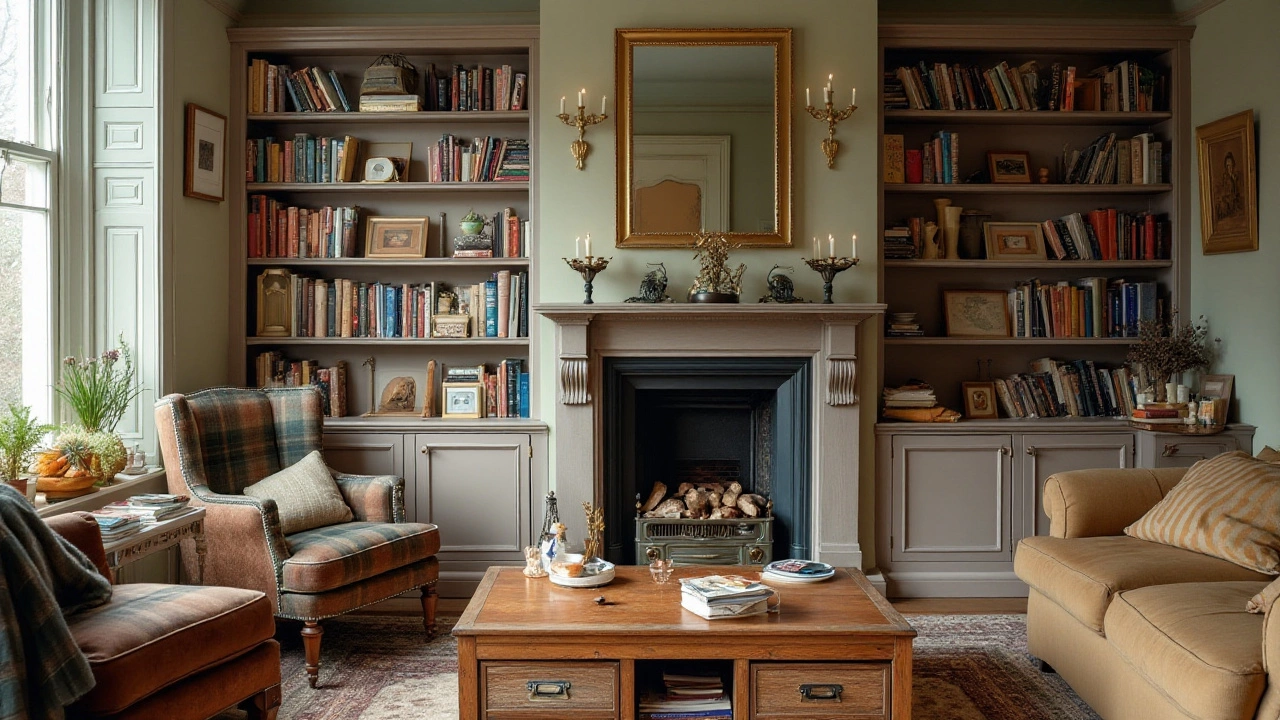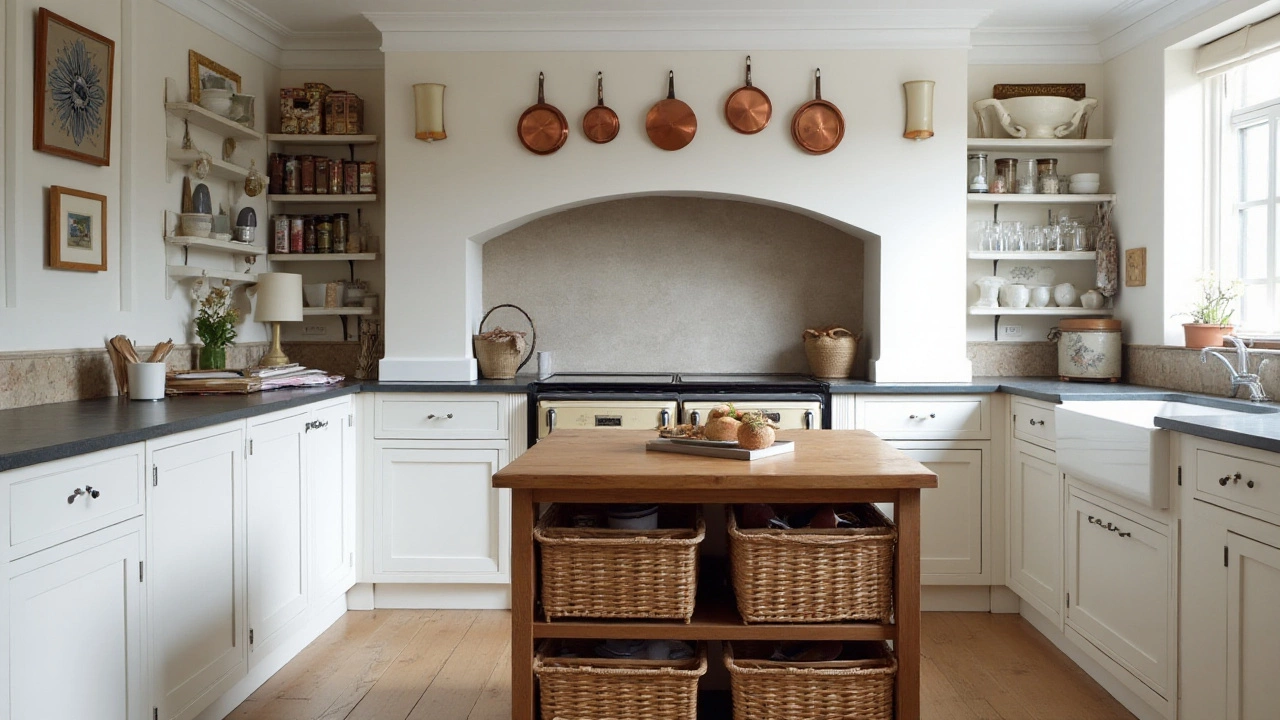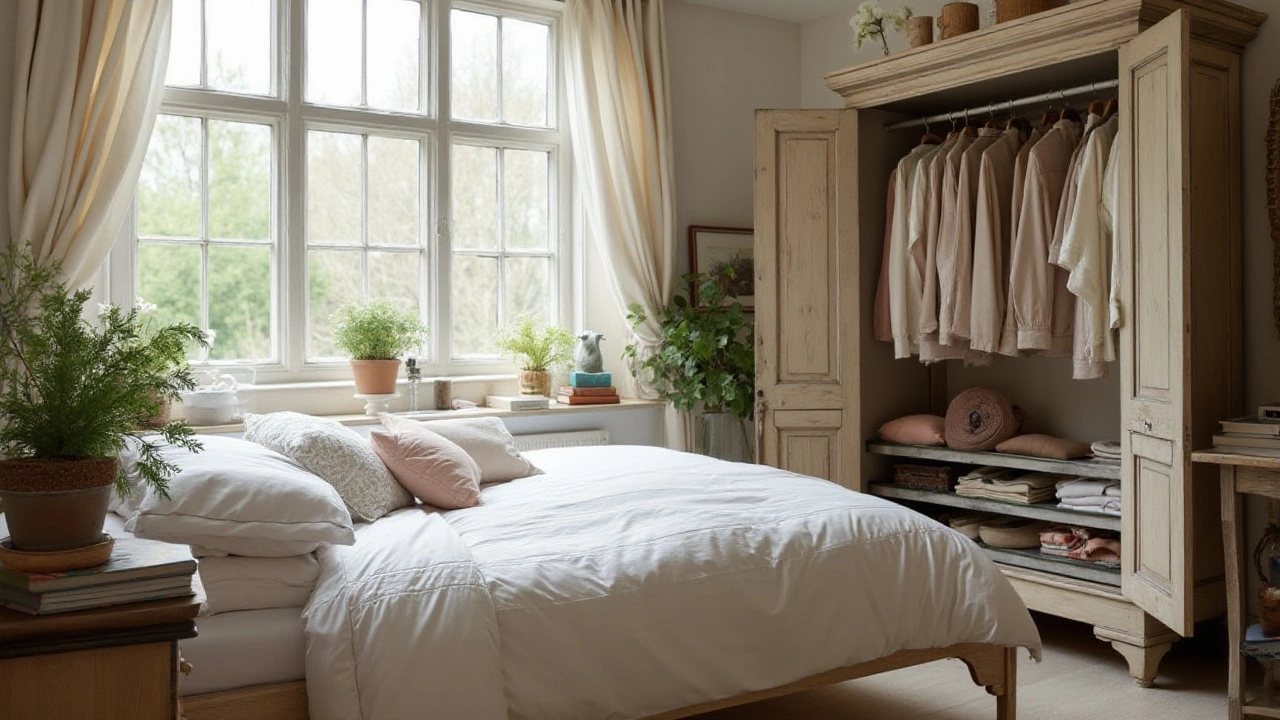Mastering Home Decluttering: Effective Storage Solutions

In today's fast-paced world, it's all too easy for our homes to become a catch-all for things we may not truly need or use. Many of us face the challenge of almost-auditorial clutter - those piles that seem to grow by themselves. The good news is, anyone can transform their living space into a sanctuary of serenity and order with a few thoughtful changes.
The first step in taming the mess is to get to the root of what causes it. From emotional attachments to poor space utilization, understanding the source of clutter is crucial. Once you've identified the problem areas, it's about making smart decisions on what stays, what goes, and how best to store the essentials. With innovation and some elbow grease, even the most cluttered homes can be stylishly organized.
- Understanding the Clutter Culprit
- Sorting and Prioritizing Your Items
- Creative Storage Solutions
- Maintaining an Organized Space
- Mindsets and Habits for a Clutter-Free Home
Understanding the Clutter Culprit
In every household, clutter tells a story. It speaks volumes about our lifestyles, habits, and emotional ties. Understanding the root of clutter is a journey that many find enlightening, and it begins with recognizing the multitude of reasons why our spaces might feel overwhelmed. One of the primary culprits is sentimental attachment. Items like old concert tickets, children's artwork, or hand-me-downs often hold emotional value long after they outstay their usefulness. These objects may evoke memories or serve as a comfort, making the idea of discarding them difficult. Aesthetics can sometimes play a role as well, as decorative pieces bought on a whim might contribute to visual clutter. While each item is beautiful on its own, together, they create chaos.
Another aspect often overlooked is consumerism. We live in an era of abundant choice and constant advertising, leading us to purchase more than we need. A common tendency is to buy things as a form of therapy, known as 'retail therapy,' which can leave us with items we never use or need. Unplanned purchases add up, creating clutter before we even realize it. Our busy lives can exacerbate the problem; without designated time for organizing, clutter accumulates in forgotten corners. Clutter also develops from inadequate storage solutions, where items do not have designated spots, leading to a daily scramble and misplaced items. Author Marie Kondo suggests, "The best way to find out what we really need is to get rid of what we don't." Her insight into purposeful organization touches on the importance of deciding what deserves a place in our homes.
In modern life, multitasking often takes precedence, leaving little room for designated organization tasks. As life's demands increase, so do the potential clutter sources—mail, laundry, books, electronics, etc. Each one demands time and attention, often competing with more pressing concerns. The advent of digital clutter also plays a significant role, where devices overflow with apps, files, and emails, paralleling the physical clutter we experience. This digital clutter can quietly seep into our lives, causing the same stress and disorganization as physical mess.
Recognizing these patterns is crucial to tackling the issue. By understanding where clutter comes from, its causes, and the underlying feelings it represents, you begin to see the manageable steps towards a less cluttered life. Decluttering tips and strategies can align with this understanding to create a more structured approach. The journey involves acknowledging each item's role in our lives and setting boundaries to maintain control over what enters our space. A helpful strategy is to assess your storage solutions. Utilize closets and shelves more effectively or invest in modular furniture that offers hidden storage options. Learning to be conscious of purchases and the emotions tied to belongings is essential in cultivating a clutter-free home.
Statistics reveal that the average person spends around 153 days of their life searching for misplaced items. Such figures highlight the time wasted due to disorganization. Addressing the source of clutter means confronting these facts and taking proactive steps to find or create dedicated spaces for everything we own. Doing so not only tidies up physical spaces but also eliminates stress associated with clutter. By embracing decluttering as a lifestyle change rather than a one-time activity, organizing the home becomes a continuous but rewarding process that enhances both functional and emotional well-being.
Sorting and Prioritizing Your Items
Confronting a house full of clutter begins with the challenging task of deciding what is truly essential in your home. It's about filtering through the overwhelming pile and discovering what genuinely adds value to your life's daily rhythm. A fantastic way to start is by categorizing items into three main groups: keep, donate, and discard. This is where having a keen eye for necessity versus whims comes into play. Many organizational experts, like Marie Kondo with her famed 'spark joy' philosophy, advocate for physically handling each item and assessing its emotional resonance and practical use. Consistency is key, and this method helps eliminate redundant items that don't serve a purpose in your space.
To make the process less daunting and more systematic, it's useful to tackle one area of your home at a time – perhaps beginning with the most clutter-prone spots like closets or the garage. This method allows you to focus fully and prevents the feeling of being submerged in an ocean of belongings. In each room, quickly assessing each item's functional value can make a huge difference. Remember, items we frequently overlook often lead to clutter. Things like duplicates or outdated gadgets can silently fill up space, keeping vital areas from staying functional. Your end goal is a balanced space, so the rule of thumb should always lean towards keeping versatility in mind.
Once you've efficiently sorted through your items, prioritizing what remains is crucial. Ask yourself how often an item is utilized, if it complements the existing décor or serves a dual purpose. It's essential to retain items that not only fit your lifestyle but also reflect your personal aesthetic. To guide you, think practically – a seasonal wardrobe rotation can help you store non-essential clothes during the off-season, maximizing your usable closet space. According to a study by the UCLA Center on Everyday Lives of Families, households that engage in periodic decluttering experience less stress and increased functionality in their everyday environment. By adopting strategic sorting and prioritizing habits, you can create a home environment that enhances both efficiency and enjoyment.
"The secret of getting ahead is getting started." - Mark Twain
In addition to sorting strategies, it's beneficial to have an inventory list, especially for seldom-used items that hold sentimental value or specific functionality. This can be a simple written list or a digital one. An often overlooked, yet effective, trick is to incorporate clear storage bins which visually remind you of the contents, curbing the tendency to forget or overstock. Labels also play a pivotal role in maintaining order post-decluttering. By ensuring every remaining item has a designated spot, shifting back to clutter becomes a lot less tempting. Moreover, with a well-thought-out inventory, finding these items when they’re actually needed becomes quicker and less of a hassle.

Creative Storage Solutions
When it comes to organizing a home, unleashing the power of creative storage solutions can make all the difference. A cluttered space isn't just about having too many items; it often reflects missed opportunities in how we use our living space. There's a wealth of inspiration to be found in homes worldwide, where space is at a premium, particularly in bustling urban centers. For example, in Japan, where apartments are notoriously compact, multifunctional furniture has been elevated to an art form. Beds with built-in drawers or couches that fold into beds are staples, offering comfort and functionality without sacrificing style. Practically speaking, implementing similar ideas can redefine a room's utility while adding personality to it.
One often overlooked yet ingeniously simple tip involves utilizing vertical spaces. Walls are not just for decoration; with imaginative shelving and hanging options, they offer ample opportunities for additional storage. Consider placing sturdy shelves above doorways or installing hooks beneath cabinets to hang items like mugs or utensils. Beyond this, transparent containers or labeled boxes can work wonders to keep everything visible and accessible, eliminating the perpetual mystery of "Where did I put that?" For a touch of elegance, consider transforming old ladders into racks for blankets or towels. These simple hacks not only maximize available space but can also turn everyday objects into quirky decor.
Multi-purpose Furniture
Embracing multifunctionality in furniture is another hallmark of home organization. Imagine a coffee table that doubles as storage for magazines and remote controls, or ottomans that secretly store toys and blankets, ready to reveal or conceal their contents in moments. There's a sense of satisfaction in knowing every piece of furniture earns its keep. As Shira Gill, author of "Minimalista," says,
"When every piece has a clear purpose and place, you've already won half the battle against chaos."These wise words hold even more weight in compact spaces, but they are just as valid for more expansive homes.
Specific figures reveal much about the appeal and efficiency of such solutions. Reports suggest that more than 25% of people regularly declutter their homes, and those with functional storage options find the process less daunting. This drive for efficiency is evident everywhere, from compact urban condos to spacious suburban homes. In these environments, appreciating the multi-purpose essence can redefine life. Exploring this idea further, one can find furniture designed with additional drawers, extending hidden storage space without demanding a bigger footprint.
Repurposing and Upcycling
Storage need not always rely on buying new. The upcycling trend offers a refreshing outlook on organization. It's about creativity and sustainability, turning an old trunk into a coffee table or a vintage suitcase into a chic storage box. Such projects are not only budget-friendly but also add unique character to a home. It is important to choose projects that match your skill level and interest, ensuring these tasks remain enjoyable rather than burdensome. For many, the idea of upcycling is appealing because it provides an opportunity to express personal style while contributing positively to the planet.
A glimpse into unexpected data highlights this growing trend. According to recent reports, searches for DIY storage ideas have skyrocketed by 60% in the last two years, indicating a collective shift toward personalized, sustainable solutions. It's exciting to think such a movement reshapes how people perceive and interact with their belongings, offering a fresh way to manage their environment. As with all aspects of home design, incorporating elements that reflect individuality will make your living space truly yours while keeping clutter in check.
Maintaining an Organized Space
Achieving a clutter-free home is only part of the journey; keeping it that way is an ongoing process that requires commitment and practical strategies. To make sure your efforts in organizing the space are not in vain, you'll want to adopt habits that prevent the clutter from creeping back. One proven method is the 'one in, one out' rule, which ensures that for every new item brought into the house, an old one needs to be discarded or donated. This helps manage the volume of possessions without letting it spiral out of control again.
An essential aspect of home organization is setting up a routine cleaning schedule that fits into your lifestyle. Regular maintenance not only prevents mess accumulation but also saves you from the overwhelming task of tackling large-scale clean-ups later. Allocating specific days of the week to organize different areas, such as closets on Wednesdays or the kitchen pantry on Saturdays, ensures that every corner of your home stays tidy. Encourage family members to participate, turning it into a shared responsibility rather than a chore for one person alone.
Many experts emphasize the psychological impact of maintaining a tidy home environment. Keeping the bed made and countertops clear each day creates a sense of accomplishment, which positively impacts one’s mindset and productivity. Implementing visible storage solutions, such as clear bins or labeled containers, can also significantly reduce mental stress. Having every item in its designated spot can give you peace of mind and momentum to maintain order. A quote by Marie Kondo, the queen of tidying up, resonates well, "Visible mess helps distract us from the true source of the disorder." Use a minimalist approach with open shelving and furniture that includes storage options. This compels you to regularly reassess the necessity of each item in sight.
Moreover, statistical studies have shown that people in organized environments are, on average, 20% more productive. This boosts not just efficiency in tasks but also overall happiness and satisfaction with their living conditions. Here, technology can play a supportive role. Using apps and tools for creating checklists or reminders can enable you to stick to your routines more effectively. The goal is not perfection but a comfortable, welcoming home that suits your lifestyle.
Another tip is to regularly refresh and rotate items in shared living spaces. This not only revitalizes your home without the need for major redecorations but also keeps the rooms dynamic and engaging for all household members. Including seasonal decor or switching up throw pillows and blankets can bring new life into a space.
To wrap it up, maintaining an organized home is a dynamic process that is rooted in simple, consistent habits. It’s about making organization a part of your lifestyle rather than treating it as an occasional project. By implementing these strategies, you ensure that your living space remains not just functional but truly delightful.

Mindsets and Habits for a Clutter-Free Home
Tackling clutter involves more than just organizing items; it requires a shift in mindset and the adoption of new habits. Many people underestimate the power of a simple, yet impactful change in perspective when it comes to maintaining a tidy home. The journey towards a clutter-free existence begins by setting a clear intention. This involves visualizing how you want your home to look and feel. Imagine the sense of calm and satisfaction that comes from walking into a neatly organized room. Channeling this vision can be a powerful motivator for sustained change.
One significant aspect of this mental shift is learning to let go. Sentimental attachments to physical possessions can often stand in the way of a clutter-free environment. Ask yourself this classic question: does it spark joy? Culling items that don't contribute positively to your life can liberate space both physically and mentally. Cultivating gratitude for what you own and acknowledging that many items have served their purpose can ease the process of letting go. Embracing minimalism, not as a rigorous doctrine but as a flexible guide, can help in navigating what truly merits a spot in your home.
To maintain this newfound order, creating a set of home organization habits is crucial. Consistency is key, as the benefits of a decluttered space are fully realized only when the effort is maintained. A daily habit of allocating a set time for tidying can work wonders. This doesn’t mean spending hours cleaning but using short bursts of dedicated time to organize and declutter. A useful strategy is the 'one in, one out' rule. Each time a new item enters your home, let go of an existing one. This steady balance prevents the gradual build-up of unnecessary items.
"The objective of cleaning is not just to clean, but to feel happiness living within that environment." - Marie Kondo
Individual mindset change alone isn’t enough; family members or roommates should be on the same page for a truly clutter-free home. Mutual understanding and shared responsibility in maintaining order are vital. Regular open discussions about communal spaces and establishing clear guidelines can enhance the collective commitment to decluttering. Productive habits, like returning items to their rightful place after use, should become second nature. It's about crafting a routine that's less about house cleaning as a chore and more about nurturing your living space.
While these habits become a part of your daily life, don't shy away from celebrating your achievements — however small. Recognizing the progress you’ve made can be empowering and affirming. As you marvel at the beautifully organized spaces, remember that each step you’ve taken, each drawer you’ve sorted, contributes to not just a more orderly home, but a healthier mindset. The journey to a clutter-free home is ongoing, but with resilience and a positive mental shift, this new lifestyle easily becomes sustainable. You’ll find that by liberating your space, you significantly boost your emotional and mental well-being, creating a haven where creativity and relaxation can flourish.